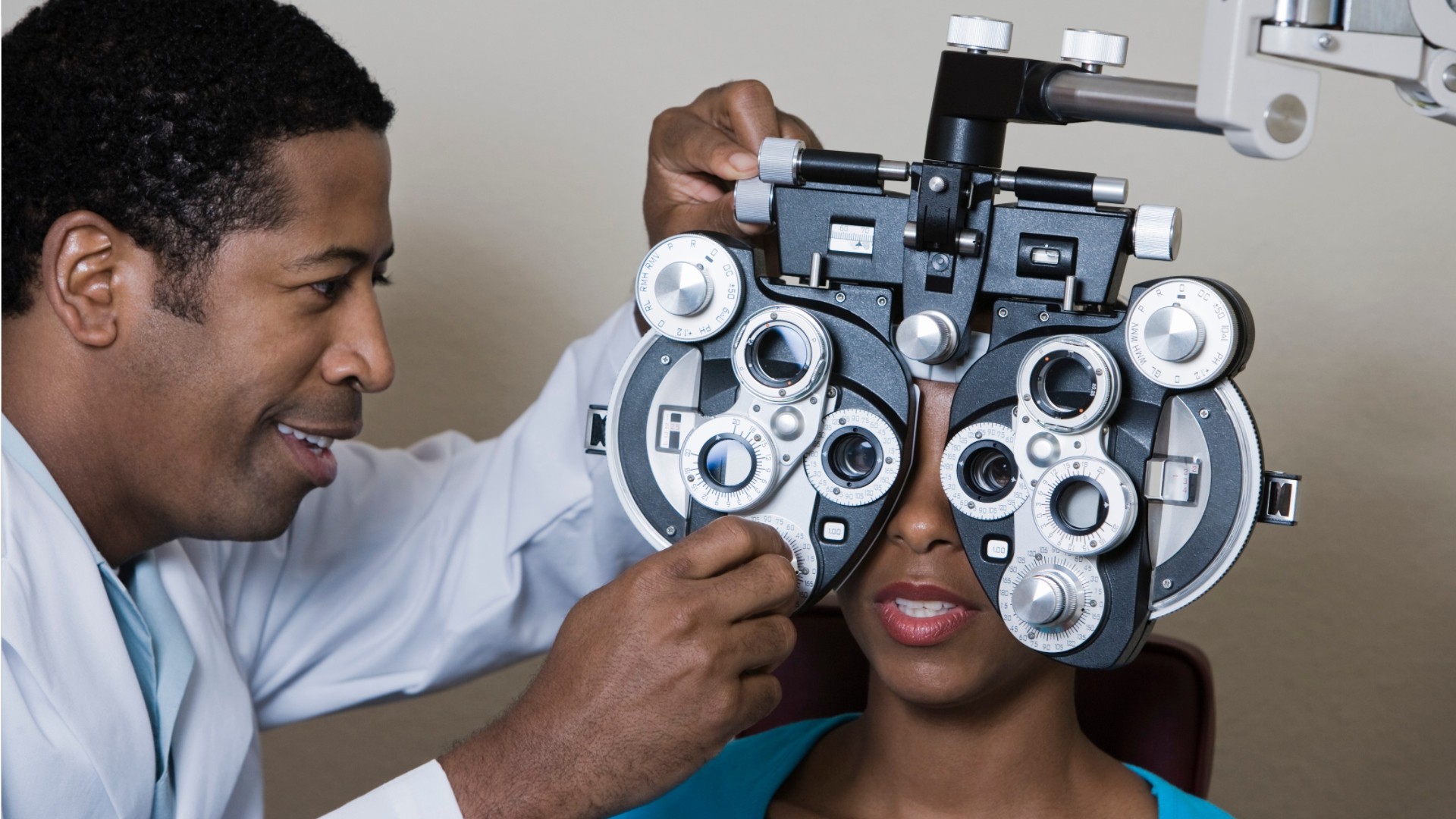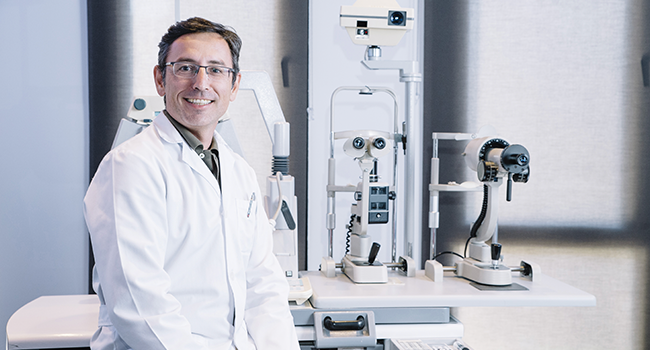Why Choosing an Eye Doctor Optometrist is Important for Your Eyes
Why Choosing an Eye Doctor Optometrist is Important for Your Eyes
Blog Article
Discovering the most recent Technological Innovations in Optometry and What They Mean for Eye Doctors
In the ever-evolving area of optometry, current technological advancements are improving just how practitioners come close to eye care. From the accuracy of Optical Comprehensibility Tomography to the nuanced insights used by AI-driven analysis devices, these advancements are establishing new criteria in patient assessment and treatment. Teleoptometry is positioned to redefine availability, making certain that competence goes beyond geographical restrictions. As these improvements permeate the practice, optometrists are encountered with the difficulty of embracing these devices to boost client outcomes. The concern continues to be: just how will these technical shifts redefine the functions and responsibilities within the career?
Technologies in Diagnostic Devices
Advancing the field of optometry, technologies in analysis tools have revolutionized the way eye treatment experts evaluate and diagnose ocular conditions and aesthetic disabilities. The past years has actually seen significant technical improvements, allowing more extensive and accurate examinations.
Another key technology is the intro of sophisticated corneal topography systems, which map the surface curvature of the cornea with accuracy. These tools are specifically beneficial for suitable call lenses and diagnosing corneal conditions. Electronic retinal imaging has transformed typical ophthalmoscopy, using thorough, scenic sights of the retina that facilitate detailed visual assessments.
The advancement of wavefront aberrometry has additionally been crucial, allowing the evaluation of refractive errors with unequaled precision (Optometrist Chino). This innovation assists in personalizing restorative lenses and boosting medical outcomes for refractive surgical treatments. Jointly, these diagnostic innovations empower optometrists to deliver superior patient care, guaranteeing early intervention and tailored treatment strategies, ultimately improving visual health outcomes
AI in Person Monitoring
Structure on the foundation of advanced diagnostic devices, the unification of artificial knowledge (AI) in individual administration represents a transformative leap for optometry. AI systems are increasingly employed to improve efficiency, precision, and personalization in patient care. By analyzing vast quantities of information, AI can identify patterns and forecast prospective ocular problems, allowing optometrists to customize treatments better. This capability is crucial in taking care of chronic eye diseases such as glaucoma and diabetic person retinopathy, where early discovery and constant monitoring are crucial.
Furthermore, AI-driven platforms assist in streamlined client communications and administrative procedures. Automated organizing, digital assessments, and individualized follow-up plans not just boost client complete satisfaction however also enhance time monitoring for specialists. These systems can triage people based on the seriousness of their problems, ensuring that those in vital demand receive prompt attention.
Furthermore, AI boosts decision-making by supplying optometrists with evidence-based recommendations and therapy pathways. By incorporating data from electronic wellness documents, AI tools provide insights that notify professional decisions, decreasing the threat of mistakes and boosting patient outcomes. As AI remains to develop, its function in individual monitoring will likely increase, improving the landscape of optometric treatment.
Advances in Retinal Imaging
In the world of optometry, retinal imaging has witnessed exceptional technological improvements that are enhancing analysis capabilities and individual care. Innovations such as Optical Comprehensibility Tomography (OCT) and fundus digital photography have transformed exactly how eye doctors assess the retina and envision.
Boosted imaging modalities like OCT angiography are additional refining analysis precision. Optometrist Chino. Such improvements facilitate the identification of min retinal changes that might signify illness development.
Moreover, innovations in man-made knowledge are augmenting retinal imaging by allowing computerized analysis of large datasets. These systems assist optometrists in identifying patterns a measure of pathology, thereby improving analysis precision and performance. Collectively, these developments are transforming retinal imaging right into a keystone of modern eye care, enhancing end results and increasing therapeutic possibilities.
Teleoptometry's Growing Function
Teleoptometry is significantly becoming an important element of eye care, driven by improvements in data and analysis tools. As optometry accepts digital improvement, teleoptometry assists in remote appointments, permitting eye doctors to expand their solutions past standard limits. This is especially beneficial in rural and underserved locations where accessibility to specialized eye care is typically restricted. By leveraging high-resolution video conferencing and advanced retinal imaging, optometrists can conduct extensive eye exams from afar, ensuring timely medical diagnosis and therapy.
The integration of fabricated intelligence (AI) further boosts teleoptometry, making it possible for the evaluation of visual information and helping in the discovery of ocular problems such as glaucoma and diabetic person retinopathy. AI-powered algorithms can swiftly interpret complex imaging data, offering eye doctors with important insights that bolster scientific decision-making.
Furthermore, teleoptometry supports connection of treatment via seamless assimilation with electronic wellness records (EHRs), enabling eye helpful hints doctors to keep thorough client histories. This guarantees that individuals obtain regular and tailored treatment even when seeking advice from with various experts.
Regardless of these advantages, obstacles stay, consisting of guaranteeing information security and managing patient assumptions. However, teleoptometry represents a check over here substantial stride towards more available, reliable, and patient-centered eye care. As technology evolves, its function is poised to broaden further.

Future Patterns in Eye Treatment
A myriad of innovative patterns is set to improve the future of eye treatment, driven by technical innovations and the advancing needs of clients. One considerable pattern is the combination of synthetic intelligence (AI) in diagnostics, which assures to boost the precision and efficiency of eye evaluations. AI algorithms can examine substantial quantities of information from retinal pictures, potentially finding problems like diabetic retinopathy and glaucoma earlier than conventional techniques.
Additionally, tailored medication is acquiring traction in optometry, with hereditary testing educating personalized treatment strategies. This technique aims to optimize patient end results by tailoring treatments to private hereditary accounts. Wearable technology, such as clever get in touch with lenses, is additionally on the perspective, providing real-time surveillance of intraocular pressure or sugar levels, hence supplying continuous understandings into systemic and ocular health and wellness.
The adoption of enhanced truth (AR) and online fact (VIRTUAL REALITY) in training and client education and learning is one more arising pattern. These modern technologies use immersive experiences that can enhance understanding and skills both for people and optometrists. As these fads evolve, eye doctors must remain abreast of technical innovations to offer cutting-edge care, making certain improved client outcomes and fulfillment in the dynamic landscape of eye care.
Final Thought

Collectively, these diagnostic advancements empower eye doctors to provide exceptional patient treatment, making sure early treatment and tailored therapy methods, eventually improving aesthetic health outcomes.

As these modern technologies continue to develop, eye doctors must adapt and integrate them right into technique, ultimately enhancing workflow performance and elevating the standard of eye care provided to people.
Report this page